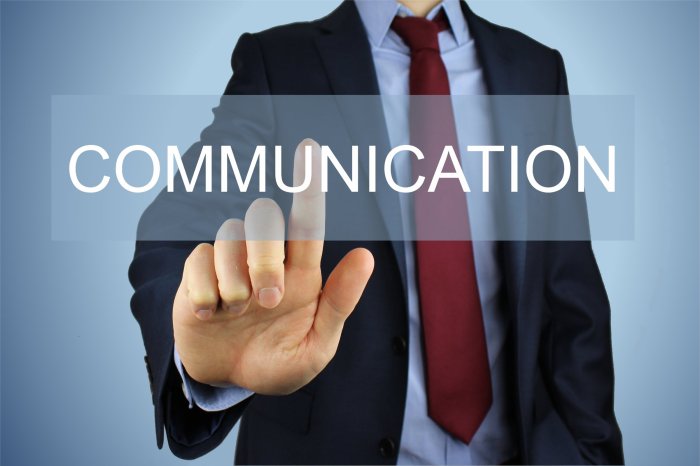
Communication during crises is not just a necessity; it’s a lifeline for organizations navigating turbulent waters. In the face of uncertainty and rapid change, effective communication can significantly influence outcomes, helping to alleviate fears and build trust among stakeholders. From timely updates to transparent messaging, the way information is conveyed can make all the difference during challenging times.
The importance of communication becomes even clearer when we consider that crises can disrupt normal operations and create panic among employees, customers, and partners. Utilizing various communication methods—from digital platforms to traditional media—ensures that messages reach the intended audience promptly. By developing strong communication strategies, businesses can maintain their integrity and foster resilience, ultimately steering through crises successfully.
Importance of Communication during Crises
Effective communication plays a pivotal role in crisis management, serving as the foundation for understanding and decision-making among all stakeholders involved. During a crisis, timely and accurate information can significantly mitigate panic and uncertainty, allowing individuals and organizations to respond thoughtfully rather than react impulsively. For example, during the COVID-19 pandemic, companies that communicated transparently about health protocols and safety measures were able to maintain trust and reduce employee anxieties.
Role of Effective Communication

The role of communication in crisis management cannot be overstated. It encompasses conveying critical information, addressing concerns, and providing reassurance. Stakeholders, including employees, customers, and the public, rely on clear messaging to navigate alarming situations. In instances like natural disasters or corporate scandals, effective messaging helps align responses and fosters a cohesive effort to manage the crisis.
Timely Information Mitigating Panic
Timely information is crucial during a crisis. When stakeholders receive updates promptly, it reduces the likelihood of rumors and misinformation spreading. For instance, during the 2008 financial crisis, firms that issued regular updates about their financial health were better positioned to maintain stakeholder confidence. Regular communication about risk assessments and changes in strategy can help alleviate fears and keep the focus on solutions.
Successful Crisis Communication Strategies
Some successful crisis communication strategies include:
- Establishing a dedicated crisis management team that can respond quickly to emerging issues.
- Utilizing multiple communication channels to reach diverse audiences effectively.
- Crafting clear, consistent messages that address the concerns of all stakeholders.
For example, Johnson & Johnson’s handling of the Tylenol crisis in the 1980s is often cited as a benchmark for crisis communication, where they prioritized consumer safety and transparency, ultimately restoring their brand’s reputation.
Methods of Crisis Communication
In the face of crises, organizations deploy various communication methods, each with its own advantages and disadvantages. Understanding these methods is crucial for effective crisis management.
Communication Methods
There are several communication methods utilized during crises, including:
- Press Releases
- Social Media Updates
- Email Notifications
- Webinars and Virtual Meetings
Each method has its unique strengths; for example, social media offers immediate reach, while press releases provide a formal approach to disseminating information.
Digital versus Traditional Media
Digital media has transformed crisis communication, offering real-time updates and direct engagement with audiences. However, traditional media still holds value, especially for reaching demographics less engaged online. The advantages of digital media include rapid dissemination, while traditional media can lend credibility and a sense of authority.
Social Media Utilization
Businesses have successfully utilized social media during crises, such as airlines promptly informing customers about delays or cancellations due to natural disasters. Companies like Delta Air Lines harnessed Twitter to communicate directly with travelers, showcasing the importance of immediate response in maintaining customer trust.
Communication Strategies for Business Accounting
In times of financial crises, accountants must adopt specific communication strategies to ensure clarity and transparency in financial reporting.
Clear Communication in Financial Crises
Clear communication is essential for accountants, especially during financial downturns. By providing stakeholders with accurate financial data and forecasts, accountants can influence strategic decisions. Transparent communication reinforces trust and helps in making informed decisions.
Importance of Transparency
Transparency in financial reporting is paramount during crises. Organizations must disclose potential risks and any significant changes to financial health. This practice not only adheres to ethical standards but also fosters confidence among investors and stakeholders.
Communication in Accounting Payroll
Managing payroll communication during crises requires careful attention to detail and proactive strategies.
Critical Communication Elements
Essential elements in payroll management communication include:
- Timely notifications about payroll schedules and any changes.
- Clear information regarding tax implications or benefits adjustments.
- Support channels for employees to ask questions or seek clarification.
A robust communication strategy helps prevent confusion and ensures employees feel valued and informed.
Checklist for Effective Payroll Notifications
To effectively communicate payroll changes during crises, consider this checklist:
- Artikel changes clearly in written communications.
- Use multiple channels (email, intranet, meetings) to share updates.
- Provide a FAQ section to address common concerns.
This approach not only informs but also engages employees during uncertain times.
Case Studies of Payroll Communication
Many organizations have faced the challenge of communicating payroll adjustments during economic downturns, such as during the 2008 recession when many companies had to alter pay structures. Organizations that swiftly communicated their decisions and rationale managed to maintain employee morale and trust.
Business Advertising and Crisis Communication
Navigating advertising strategies during crises requires a delicate balance of brand integrity and sensitivity to public sentiment.
Adjusting Advertising Messaging
During crises, businesses must adjust their advertising to reflect the current sentiment. This involves shifting from promotional messaging to empathetic outreach, acknowledging the challenges faced by consumers. Brands that resonate with their audience during crises can enhance loyalty and appreciation.
Maintaining Brand Tone
While adjusting messaging, it’s vital to maintain brand tone. Businesses should practice sensitivity while still promoting their values. For instance, a brand’s commitment to sustainability can be highlighted while addressing how they adapt during crises.
Impact on Advertising Effectiveness
Crisis communication significantly impacts advertising effectiveness. Brands that communicate authentically and responsively can not only retain their customer base but potentially attract new customers who appreciate their approach during difficult times.
Communication in Business Agriculture
The agricultural sector faces unique challenges when it comes to communication during crises.
Challenges of Communication in Agriculture
Agricultural crises, such as droughts or market fluctuations, create urgent communication needs among farmers. The decentralized nature of farming can hinder timely information dissemination, making it important to leverage effective communication channels.
Effective Communication Channels for Farmers
Farmers should utilize various communication channels, including:
- SMS alerts for immediate updates on weather conditions and market changes.
- Local community meetings to discuss shared challenges.
- Online forums for sharing resources and advice.
These channels can facilitate collaboration and support among agricultural stakeholders.
Coordinating with Agricultural Stakeholders
Effective coordination with agricultural stakeholders involves sharing information about best practices during crises. For instance, during a pest outbreak, farmers can benefit from collaborative efforts to share timely data and control measures.
Architecture and Interior Design Communication
In times of crisis, architects face critical communication requirements to keep projects on track.
Stakeholder Communication Needs
Key stakeholders in architectural projects, such as clients, contractors, and suppliers, require clear communication about project status, timelines, and any adjustments due to crises. Regular updates help manage expectations and maintain project momentum.
Best Practices for Project Updates
Best practices for communicating project updates include:
- Establishing a regular communication schedule with stakeholders.
- Utilizing visual aids, such as project timelines and diagrams, to convey complex information.
- Creating a centralized information hub for all project-related communications.
These measures can minimize misunderstandings and foster a collaborative environment.
Crisis Communication in Business Branding
Maintaining brand integrity during a crisis is essential for long-term success.
Maintaining Brand Integrity
Brands must focus on maintaining integrity by communicating authentically during crises. This involves acknowledging challenges and demonstrating commitment to values. Companies that manage to uphold their brand promise often emerge stronger post-crisis.
Effective Communication of Changes
Communicating changes effectively involves outlining the reasons behind decisions and the actions taken. Brands should convey their strategies transparently to their audience, ensuring they understand the rationale.
Examples of Rebranding Efforts
Companies have successfully rebranded in response to crises, such as when automotive brands shifted their production to essential medical supplies during the pandemic. This not only addressed immediate needs but also reinforced their commitment to community welfare.
Business Travel and Communication Strategies
Effective communication strategies are vital for businesses handling travel during crises.
Communication Needs for Travel Management
Businesses must clearly communicate travel restrictions and changes to employees. This includes informing them about safety protocols and potential risks associated with travel during crises.
Guide for Notifying Employees
A guide for notifying employees about travel restrictions should include:
- Clear guidelines on travel policies and safety measures.
- Regular updates as situations evolve.
- Support mechanisms for employees facing travel-related issues.
Such comprehensive communication helps ensure employees feel secure and informed.
Importance of Clear Communication with Travel Partners
Clear communication with travel partners is crucial to navigate disruptions effectively. Establishing open lines of communication helps mitigate risks and ensures that all parties are aligned on safety protocols and operational changes.
Career Advice in Crisis Situations
Professionals can enhance their communication skills to navigate career challenges during crises.
Effective Communication During Job Crises
Communicating effectively during job crises involves being transparent about career goals and current challenges. Networking becomes increasingly important, as maintaining relationships can lead to new opportunities.
Importance of Networking

Networking is essential during tough times, as connections can provide support and open doors to job opportunities. Professionals should actively engage with their network, sharing updates and seeking advice.
Success Stories of Career Advancement
Many professionals have experienced career advancement during economic downturns by leveraging effective communication and networking. For example, individuals who sought mentorship and stayed connected with industry peers often found new paths forward.
Communication in Change Management
Communication plays a strategic role in managing organizational change during crises.
Role of Communication in Change Management
Effective communication is instrumental in guiding employees through organizational changes. Clear messaging helps alleviate fears and fosters a culture of trust and engagement.
Engaging Employees through Communication
Engaging employees during change involves providing consistent updates and opportunities for feedback. Utilizing platforms for open dialogue can significantly enhance employee buy-in and morale.
Examples of Successful Change Management Communications
Organizations that have successfully navigated change during crises often prioritize transparent communication. For instance, companies that implemented regular town hall meetings to discuss changes saw increased employee commitment and adaptability.
Construction Industry Communication
The construction industry encounters specific communication barriers during crises that require innovative solutions.
Communication Barriers in Construction
Challenges such as fragmented communication among teams and varying levels of access to information can hinder effective crisis management in construction projects. Addressing these barriers is essential for maintaining safety and project timelines.
Effective Site Communication Strategies
Strategies for effective site communication include:
- Implementing regular safety briefings and updates for all workers.
- Using visual aids to communicate hazards and safety protocols.
- Establishing a clear chain of command for communication during emergencies.
These practices ensure that all workers are informed and prepared to respond during crises.
Examples of Communication Tactics in Construction
During crises, construction companies that employed robust communication tactics—such as immediate updates regarding safety measures—often maintained operations with minimal disruption, demonstrating the importance of proactive communication.
Business Consulting and Crisis Management
Consultants play a vital role in aiding businesses to establish effective crisis communication plans.
Aiding Businesses in Crisis Communication Plans
Consultants help organizations develop tailored crisis communication strategies by assessing their specific needs and vulnerabilities. This ensures that businesses can respond adeptly to crises.
Framework for Crisis Communication Strategy
A robust framework for crisis communication strategy should include:
- Identifying potential risks and creating a response plan.
- Designating a crisis communication team responsible for messaging.
- Establishing communication channels for both internal and external stakeholders.
This approach creates a structured method for addressing crises.
Case Studies in Crisis Communication
Consulting firms have successfully guided clients through crises by implementing strategic communication plans that involve regular stakeholder engagement and real-time updates, helping organizations navigate uncertain waters.
Continuity and Disaster Recovery Communication
Communication is a crucial element in business continuity planning and disaster recovery efforts.
Importance of Communication in Business Continuity
Effective communication ensures that all stakeholders are aware of protocols and procedures during a crisis, minimizing confusion and enhancing response efforts. Regular updates are key to maintaining operational integrity.
Key Elements in Disaster Recovery Communication Plan
Key elements to include in a disaster recovery communication plan encompass:
- Clear roles and responsibilities for communication during crises.
- Comprehensive contact lists for stakeholders and emergency services.
- Regular training and drills to prepare for potential crises.
These elements contribute to a fortified response framework.
Preparing Communication Channels Before a Crisis
Businesses can prepare their communication channels by investing in reliable systems for dissemination and ensuring that all employees are trained in using them effectively. This proactive approach can significantly reduce response times during actual crises.
Customer Service Communication
Customer service communication is critical during crises, as it can define customer experiences and brand loyalty.
Role of Customer Service Communication
During a crisis, customer service representatives must be equipped to provide timely and accurate information to customers. This helps manage expectations and builds trust in the brand.
Best Practices for Responding to Customer Inquiries
Best practices for responding to customer inquiries during emergencies include:
- Setting clear response times for inquiries.
- Providing multiple channels for customers to reach out (phone, email, social media).
- Empowering customer service teams with up-to-date information to assist customers effectively.
Such practices enhance customer satisfaction and loyalty.
Maintaining Customer Trust
Maintaining customer trust requires transparent communication throughout the crisis. Brands that openly share updates and acknowledge challenges tend to strengthen their relationships with customers, even during difficult times.
Entrepreneurialism and Communication in Crises
Entrepreneurs can leverage effective communication as a strategy for crisis resilience.
Leveraging Communication for Crisis Resilience
Entrepreneurs who communicate effectively can navigate crises with greater agility. By maintaining open lines of communication with stakeholders, they can adapt their strategies and respond to changes in the market swiftly.
Examples of Startups Thriving through Communication
Some startups have thrived during crises by communicating their value propositions clearly and adjusting their offerings to meet changing customer needs. For instance, companies that pivoted to remote services during the pandemic often found new opportunities for growth.
Key Communication Skills for Entrepreneurs
Entrepreneurs should develop key communication skills, including:
- Active listening to understand stakeholder concerns.
- Clear and concise messaging to convey information effectively.
- Empathy in communication to build strong relationships.
These skills are essential for navigating challenging situations.
Business Ethics and Communication
Ethical implications in communication during crises are paramount for maintaining credibility and trust.
Importance of Honesty and Integrity
Honesty and integrity in business messaging during crises can significantly impact stakeholder perceptions. Companies that prioritize ethical communication foster long-term relationships and loyalty.
Aligning Crisis Communication with Ethical Standards
To align crisis communication with ethical standards, organizations should:
- Ensure transparency in messaging regarding any challenges faced.
- Promote accountability by taking responsibility for actions.
- Engage with stakeholders to address concerns and feedback.
This alignment encourages trust and credibility.
Business Franchising Communication
Effective communication between franchises and franchisors is essential during crises.
Communication Requirements During Crises
Franchisors must clearly communicate changes in policies, procedures, and support systems to franchisees during crises. This ensures that all parties are aligned and can navigate challenges effectively.
Best Practices for Communication to Franchisees
Best practices for communicating with franchisees include:
- Regular updates on industry trends and regulatory changes.
- Providing resources for operational adjustments during crises.
- Facilitating forums for franchisee feedback and communication.
Such practices enhance collaboration and responsiveness among franchise networks.
Examples of Successful Franchise Communication Strategies
Brands that have maintained strong communication strategies during crises often see franchisee loyalty increase. For example, during the COVID-19 pandemic, many fast-food franchises adapted their messaging to support franchisees with guidelines and resources, ensuring consistency across locations.
Furnishings and Supplies Communication
The logistics of communicating with suppliers during a crisis are crucial for maintaining operational efficiency.
Logistics of Supplier Communication
Effective communication with suppliers can significantly impact inventory management and supply chain continuity. Clear updates about demand fluctuations and logistical challenges are essential.
Plan for Effective Inventory Communication
A plan for effective inventory communication should include:
- Regular updates on supply chain disruptions and expected timelines.
- Establishing a contact plan for urgent communication needs.
- Utilizing technology for real-time inventory tracking.
This approach ensures that all parties are informed and can adjust strategies accordingly.
Successful Supply Chain Communication Examples
Businesses that managed their supply chain communication effectively during crises often maintained better inventory levels and customer satisfaction. For instance, companies that proactively communicated with suppliers about anticipated disruptions were able to implement contingency plans more efficiently.
Human Resources and Crisis Communication
Human Resources plays a vital role in maintaining employee communication during crises.
Role of HR in Employee Communication
HR is responsible for crafting clear messages to keep employees informed about changes in policies, health protocols, and support resources during crises. Transparency fosters trust and loyalty among employees.
Key Messages HR Should Communicate
Key messages that HR should communicate include:
- Updates on health and safety measures in the workplace.
- Information about employee assistance programs and resources.
- Guidelines on remote work and flexible schedules.
These messages help alleviate employee concerns and promote a supportive work environment.
Strategies for Keeping Employees Informed
HR departments should implement strategies such as regular newsletters, town hall meetings, and open-door policies to maintain communication. Encouraging feedback and questions fosters a culture of engagement and trust among employees.
Industrial Mechanical Communication
Communication in the industrial sector is vital during crises to ensure safety and operational continuity.
Importance of Communication on Industrial Sites
Effective communication on industrial sites is crucial for maintaining safety standards and ensuring that all personnel are aware of protocols during crises. Clear messaging can significantly reduce risks and enhance response efforts.
Strategies for Maintaining Safety Communication
Strategies for effective safety communication include:
- Regular safety drills and training sessions for all employees.
- Utilizing visual communication tools, such as signage and alerts.
- Establishing a clear communication hierarchy for reporting issues.
Such measures create a culture of safety and preparedness on industrial sites.
Effective Communication Tactics in Industrial Companies
Industrial companies that employed effective communication tactics, including real-time updates during emergencies, often demonstrated greater resilience and adaptability, ensuring the safety of their workforce and continuity of operations.
Closing Notes
In summary, the essence of communication during crises lies in its ability to connect, inform, and reassure all involved parties. As organizations face unpredictable challenges, honing effective communication strategies not only mitigates panic but also solidifies relationships and enhances trust. By prioritizing clear, transparent dialogue, businesses can emerge from crises stronger and more unified than before.
Q&A
Why is timely communication crucial during a crisis?
Timely communication helps to prevent misinformation and panic, providing stakeholders with the information they need to make informed decisions.
What are common mistakes in crisis communication?
Common mistakes include vague messaging, lack of transparency, and failing to address the audience’s concerns directly.
How can social media be effectively used during a crisis?
Social media can be used to disseminate real-time updates, engage with the audience, and address concerns promptly, making it a powerful tool for crisis communication.
What role does leadership play in crisis communication?
Leadership plays a vital role by setting the tone for communication, ensuring messages are consistent, and demonstrating empathy towards stakeholders.
How can organizations prepare for effective crisis communication?
Organizations can prepare by developing a crisis communication plan, training staff, and conducting simulated crisis scenarios to practice their responses.




